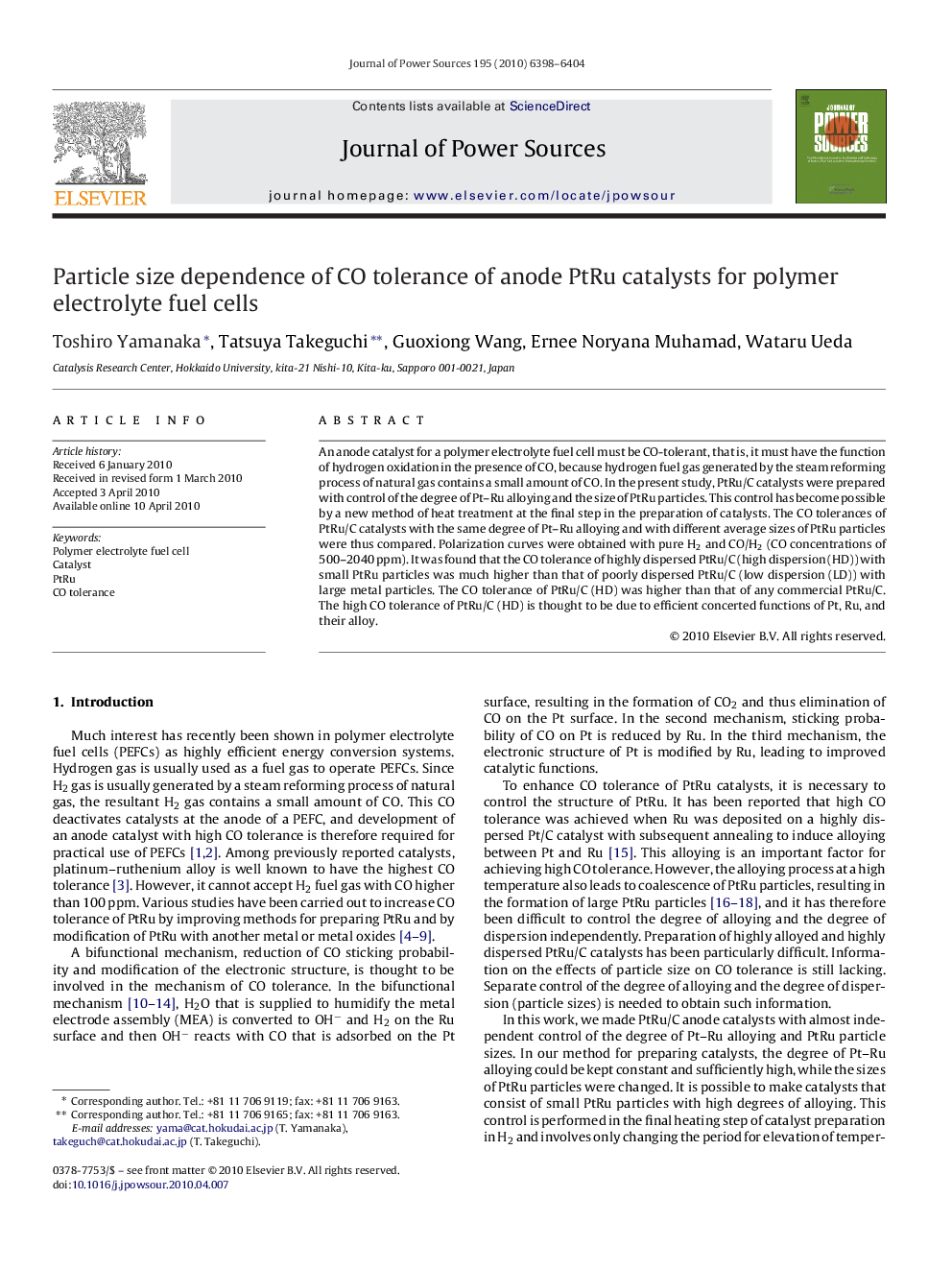| Article ID | Journal | Published Year | Pages | File Type |
|---|---|---|---|---|
| 1289358 | Journal of Power Sources | 2010 | 7 Pages |
An anode catalyst for a polymer electrolyte fuel cell must be CO-tolerant, that is, it must have the function of hydrogen oxidation in the presence of CO, because hydrogen fuel gas generated by the steam reforming process of natural gas contains a small amount of CO. In the present study, PtRu/C catalysts were prepared with control of the degree of Pt–Ru alloying and the size of PtRu particles. This control has become possible by a new method of heat treatment at the final step in the preparation of catalysts. The CO tolerances of PtRu/C catalysts with the same degree of Pt–Ru alloying and with different average sizes of PtRu particles were thus compared. Polarization curves were obtained with pure H2 and CO/H2 (CO concentrations of 500–2040 ppm). It was found that the CO tolerance of highly dispersed PtRu/C (high dispersion (HD)) with small PtRu particles was much higher than that of poorly dispersed PtRu/C (low dispersion (LD)) with large metal particles. The CO tolerance of PtRu/C (HD) was higher than that of any commercial PtRu/C. The high CO tolerance of PtRu/C (HD) is thought to be due to efficient concerted functions of Pt, Ru, and their alloy.
